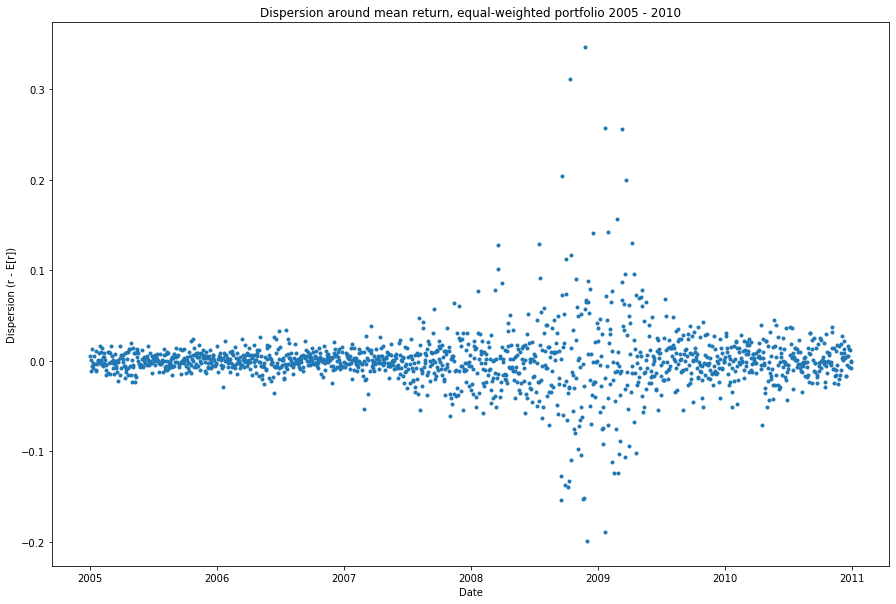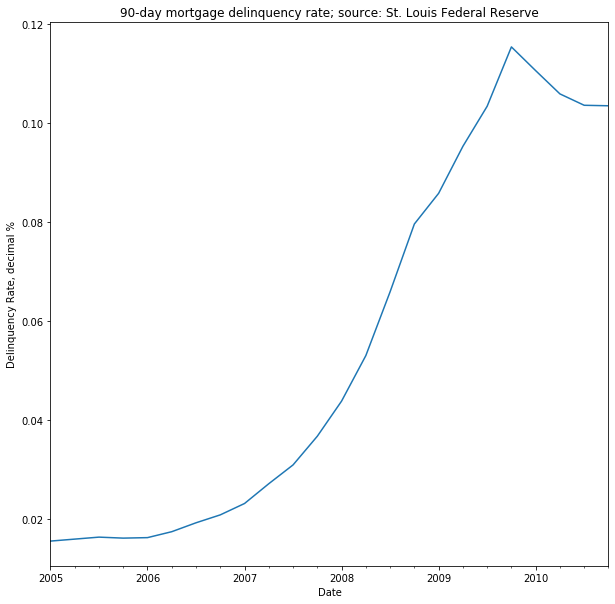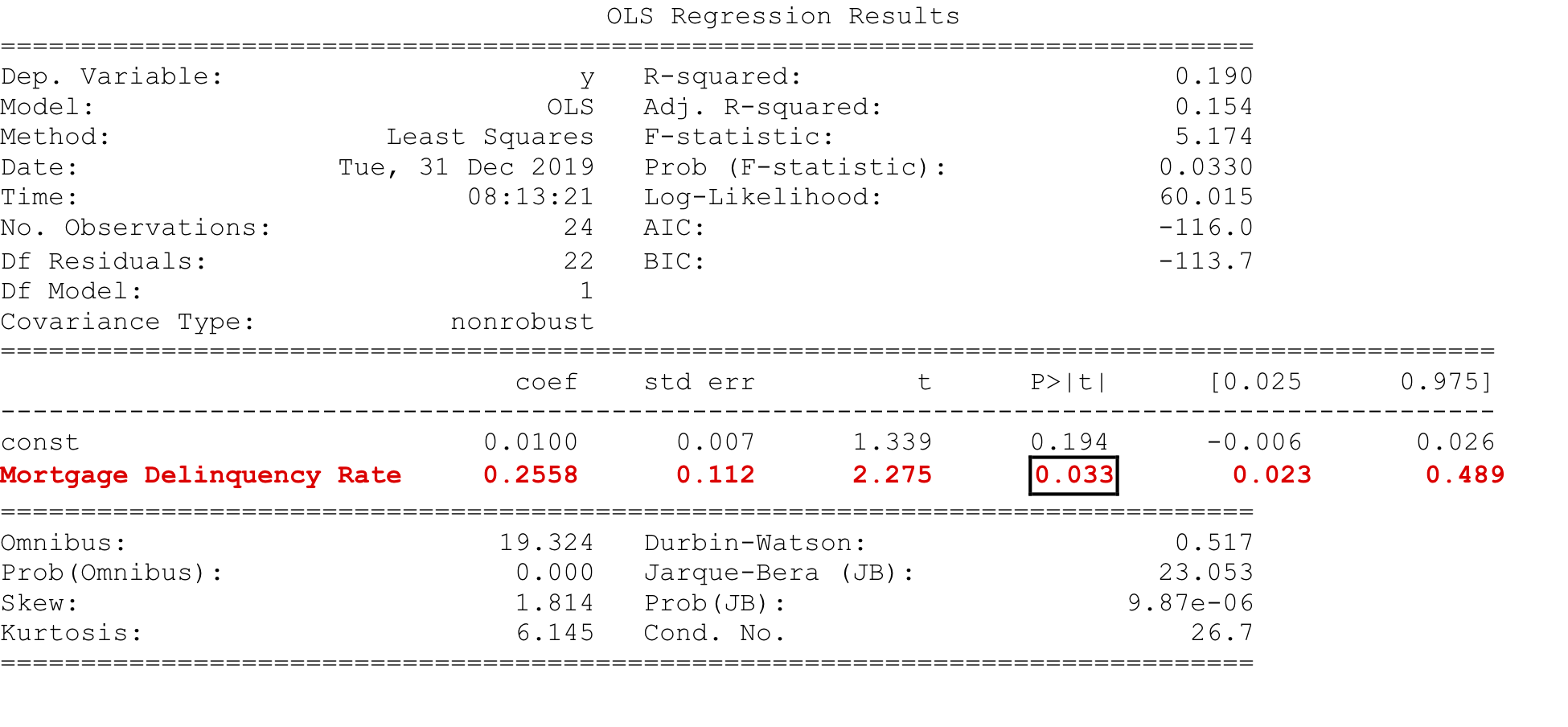Risk factors and the financial crisis
Quantitative Risk Management in Python

Jamsheed Shorish
Computational Economist
Risk factors
- Volatility: measure of dispersion of returns around expected value
- Time series: expected value = sample average
- What drives expectation and dispersion?
- Risk factors: variables or events driving portfolio return and volatility

Risk exposure
Risk exposure: measure of possible portfolio loss
- Risk factors determine risk exposure
Example: Flood Insurance
- Deductible: out-of-pocket payment regardless of loss
- 100% coverage still leaves deductible to be paid
- So deductible is risk exposure
- Frequent flooding => more volatile flood outcome
- Frequent flooding => higher risk exposure
Systematic risk
Systematic risk: risk factor(s) affecting volatility of all portfolio assets
- Market risk: systematic risk from general financial market movements
Airplane engine failure: systematic risk!
Examples of financial systematic risk factors:
- Price level changes, i.e. inflation
- Interest rate changes
- Economic climate changes

Idiosyncratic risk
Idiosyncratic risk: risk specific to a particular asset/asset class.
Turbulence and the unfastened seatbelt: idiosyncratic risk!
Examples of idiosyncratic risk:
- Bond portfolio: issuer risk of default
- Firm/sector characteristics
- Firm size (market capitalization)
- Book-to-market ratio
- Sector shocks

Factor models
- Factor model: assessment of risk factors affecting portfolio return
- Statistical regression, e.g. Ordinary Least Squares (OLS):
- dependent variable: returns (or volatility)
- independent variable(s): systemic and/or idiosyncratic risk factors
- Fama-French factor model: combination of
- market risk and
- idiosyncratic risk (firm size, firm value)
Crisis risk factor: mortgage-backed securities
- Investment banks: borrowed heavily just before the crisis
- Collateral: mortgage-backed securities (MBS)
- MBS: supposed to diversify risk by holding many mortgages of different characteristics
- Flaw: mortgage default risk in fact was highly correlated
- Avalanche of delinquencies/default destroyed collateral value
- 90-day mortgage delinquency: risk factor for investment bank portfolio during the crisis

Crisis factor model
- Factor model regression: portfolio returns vs. mortgage delinquency
- Import
statsmodels.apilibrary for regression tools - Fit regression using
.OLS()object and its.fit()method - Display results using regression's
.summary()method
import statsmodels.api as smregression = sm.OLS(returns, delinquencies).fit()print(regression.summary())
Regression .summary() results

Let's practice!
Quantitative Risk Management in Python

